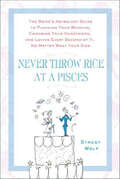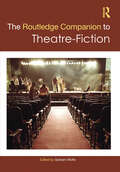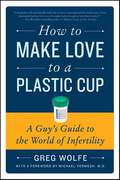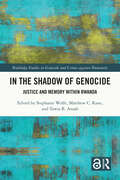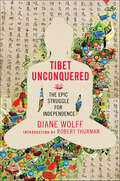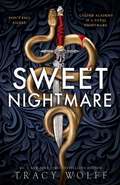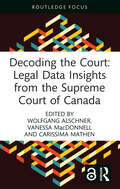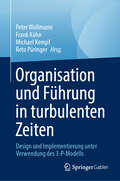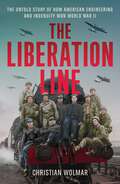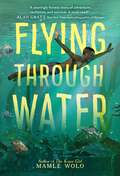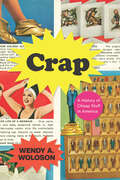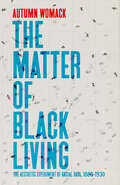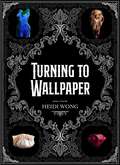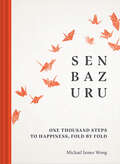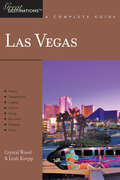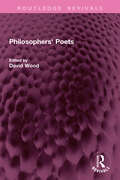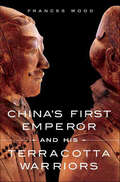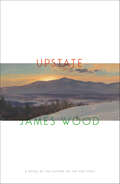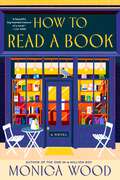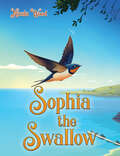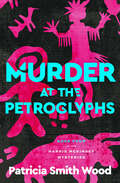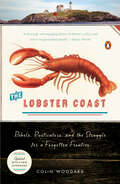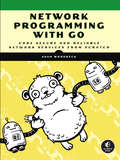- Table View
- List View
Never Throw Rice at a Pisces: The Bride's Astrology Guide to Planning Your Wedding, Choosing Your Honeymoon, and Loving Every Second of It, No Matter What Your Sign
by Stacey WolfSimply because no two brides (or astrological signs) are ever the same. . . .Congratulations, bride-to-be! You're newly engaged, you've flashed your ring to all your neighbors, and you've called all your friends and family with the exciting news—so what do you do next? Read your horoscope, of course! You've been following the stars ever since you can remember, and now you can use astrology as a tool to plan the biggest day of your life! Never Throw Rice at a Pisces helps you use the powers of your astrological sign to make your wedding relaxed, romantic, and magically memorable. Astrologer Stacey Wolf gives smart, easy-to-use sign-specific advice on topics such as:• Vows to inspire a Scorpio bride and Cancer groom• How to talk a headstrong Aries groom into just about anything• The perfect cake for a whimsical Gemini bride• A heavenly honeymoon for an Aquarius/Libra couple• What a Sagittarius bride should avoid for a stress-free weddingPeppered with fun sidebars, stories from other astrobrides, and quick tips based on the twelve zodiac signs to solve last-minute dilemmas, Never Throw Rice at a Pisces will help you plan the perfect wedding and honeymoon you were born to have!
The Routledge Companion to Theatre-Fiction (Routledge Literature Handbooks)
by Graham WolfeNovelists have long been attracted to theatre. Some have pursued success on the stage, but many have sought to combine these worlds, entering theatre through their fiction, setting stages on their novels’ pages, and casting actors, directors, and playwrights as their protagonists. The Routledge Companion to Theatre-Fiction has convened an international community of scholars to explore the remarkable array of novelists from many eras and parts of the world who have created fiction from the stuff of theatre, asking what happens to theatre on the pages of novels, and what happens to novels when they collaborate with theatre. From J. W. Goethe to Louisa May Alcott, Mikhail Bulgakov, Virginia Woolf, and Margaret Atwood, some of history’s most influential novelists have written theatre-fiction, and this Companion discusses many of these figures from new angles. But it also spotlights writers who have received less critical attention, such as Dorothy Leighton, Agustín de Rojas Villandrando, Ronald Firbank, Syed Mustafa Siraj, Li Yu, and Vicente Blasco Ibañez, bringing their work into conversation with a vital field. A valuable resource for students, scholars, and admirers of both theatre and novels, The Routledge Companion to Theatre-Fiction offers a wealth of new perspectives on topics of increasing critical concern, including intermediality, theatricality, antitheatricality, mimesis, diegesis, and performativity.
How to Make Love to a Plastic Cup: A Guy's Guide to the World of Infertility
by Greg Wolfe“A Guy’s Guide to the World of Infertility,” How to Make Love to a Plastic Cup is a light-hearted, laugh-out-loud funny, yet at the same time helpful and informative handbook to all things infertility-related written with the male wannabe babymaker in mind. Greg Wolf, who has “been there,” delivers the goods in a humorous, direct way that every potential dad will love…and every hopeful mom will want to purchase for the often clueless man in her life.
In the Shadow of Genocide: Justice and Memory within Rwanda (Routledge Studies in Genocide and Crimes against Humanity)
by Stephanie Wolfe Matthew C. Kane Tawia B. AnsahThis book brings together scholars and practitioners for a unique inter-disciplinary exploration of justice and memory within Rwanda.It explores the various strategies the state, civil society, and individuals have employed to come to terms with their past and shape their future. The main objective and focus is to explore broad and varied approaches to post-atrocity memory and justice through the work of those with direct experience with the genocide and its aftermath. This includes many Rwandan authors as well as scholars who have conducted fieldwork in Rwanda. By exploring the concepts of how justice and memory are understood the editors have compiled a book that combines disciplines, voices, and unique insights that are not generally found elsewhere.Including academics and practitioners of law, photographers, poets, members of Rwandan civil society, and Rwandan youth this book will appeal to scholars and students of political science, legal studies, French and francophone studies, African studies, genocide and post-conflict studies, development and healthcare, social work, education and library services.The Open Access version of this book, available at www.taylorfrancis.com, has been made available under a Creative Commons Attribution-Non Commercial-No Derivatives (CC-BY-NC-ND) 4.0 license.
Tibet Unconquered: The Epic Struggle for Independence
by Diane WolffA fabled country in the far reaches of the Himalayas, Tibet looms large in the popular imagination. The original home of the Dalai Lama, one of the great spiritual leaders of our time, Tibetan Buddhism inspires millions worldwide with the twin values of wisdom and compassion. Yet the Chinese takeover six decades ago also shows another side of Tibet—that of a passionate symbol of freedom in the face of political oppression. International sympathy has kept the Dalai Lama's appeals for autonomy on the world's political agenda, but in light of China's political and economic gains there is fear that Tibet is in danger of being forgotten by the world. As the Dalai Lama grows older, and the Chinese threaten to intervene in the selection of Tibet's next spiritual leader, many wonder if there is any hope for the Tibetan way of life, or if it is doomed to become a casualty of globalization.In Tibet Unconquered East Asia expert Diane Wolff explores the status of Tibet over eight-hundred-years of history. From the Mongol invasion, to the emergence of the Dalai Lama, Wolff investigates the history of political and economic relations between China and Tibet. Looking to the long rule of Chinggis Khan as a model, she argues, that by thinking in regional terms both countries could usher in a new era of prosperity while maintaining their historical and cultural identities. Wolff creates a forward-thinking blueprint for resolving the China and Tibet problem, grounded in the history of the region and the reality of today's political environment that, will guide both countries to peace.
Sweet Nightmare (Caldor)
by Tracy WolffFor Clementine, life at a deadly academy for rogue paranormals is upended when a hurricane takes aim for the school, unleashing nightmares and secrets in the gripping new spin-off to Tracy Wolff's instant No. 1 New York Times bestselling Crave series.The Calder Academy series is best enjoyed in order.Book 1 Sweet NightmareBook 2 Sweet ChaosBook 3 Sweet VengeancePraise for Tracy Wolff: 'Fandom's new favourite vampire romance obsession' Hypable'This generation's Twilight' Lynn Rush 'I'm having the BEST book hangover. Filled with danger, humour, and heart, Crave proves that vampires are definitely back!' J. Kenner'Beautifully descriptive with amazing pacing and wonderfully sinister settings' Christine Feehan...................Don't miss a single book in the series that spawned a phenomenon! Crave; Crush; Covet; Court; Charm; Cherish'Suffice it to say: I have a new book boyfriend!' Pintip Dunn'Intricately crafted, deeply romantic' Victoria Scott'Funny, smart, and compelling' Emily McKay
Decoding the Court: Legal Data Insights from the Supreme Court of Canada
by Wolfgang Alschner, Vanessa MacDonnell and Carissima MathenThis edited collection combines state-of-the-art legal data analytics with in-depth doctrinal analysis to study the Supreme Court of Canada (SCC), Canada’s top court. A data analytics perspective adds new dimensions to the study of courts and their case law. It renders legal analysis scalable, making it possible to investigate thousands of judicial decisions, adding new breadth and depth. It also enables researchers to combine doctrinal questions about how the law evolves with institutional questions about how courts operate, shedding new light on how law works in practice. By applying a range of methods to study the content of SCC decisions, this work bridges the gap between qualitative and quantitative research. Demonstrating how new analytical perspectives can generate new insights about the Supreme Court, an institution which is closely studied by scholars both within and outside Canada, the book will be essential reading for legal scholars and political scientists, particularly those working in public law and in empirical legal studies.
American Disgust: Racism, Microbial Medicine, and the Colony Within
by Matthew J. Wolf-MeyerExamining the racial underpinnings of food, microbial medicine, and disgust in America American Disgust shows how perceptions of disgust and fears of contamination are rooted in the country&’s history of colonialism and racism. Drawing on colonial, corporate, and medical archives, Matthew J. Wolf-Meyer argues that microbial medicine is closely entwined with changing cultural experiences of digestion, excrement, and disgust that are inextricably tied to the creation of whiteness. Ranging from nineteenth-century colonial encounters with Native people to John Harvey Kellogg&’s ideas around civilization and bowel movements to mid-twentieth-century diet and parenting advice books, Wolf-Meyer analyzes how embedded racist histories of digestion and disgust permeate contemporary debates around fecal microbial transplants and other bacteriotherapeutic treatments for gastrointestinal disease. At its core, American Disgust wrestles with how changing cultural notions of digestion—what goes into the body and what comes out of it—create and impose racial categories motivated by feelings of disgust rooted in American settler-colonial racism. It shows how disgust is a changing, yet fundamental, aspect of American subjectivity and that engaging with it—personally, politically, and theoretically—opens up possibilities for conceptualizing health at the individual, societal, and planetary levels.
Organisation und Führung in turbulenten Zeiten: Entwurf und Implementierung unter Verwendung des 3-P-Modells
by Peter Wollmann Frank Kühn Michael Kempf Reto PüringerDieses Buch knüpft an die erfolgreiche Entwicklung des Drei-Säulen-Modells (3-P-Modell) der Autoren für die Organisation und Führung in disruptiven Zeiten an. Der Schwerpunkt liegt darauf, dem Leser bei der Umsetzung des Modells zu helfen und eine Vielzahl von Anwendungsfällen für diese VUCA-Zeiten (Volatilität, Ungewissheit, Komplexität und Mehrdeutigkeit), einschließlich globaler Krisen wie der COVID-19-Pandemie, zu liefern. Das Buch deckt ein breites Spektrum von Organisationen ab: privater und öffentlicher Sektor, Nichtregierungsorganisationen, lokale und globale Regierungsinstitutionen, globale Organisationen wie die UNO usw. Darüber hinaus wird aufgezeigt, wie das 3-P-Modell auf Herausforderungen bei der Organisationsgestaltung, dem Management und der Führung angewendet werden kann.
The Liberation Line: The Untold Story of How American Engineering and Ingenuity Won World War II
by Christian WolmarThe epic story of the engineers and rail workers who ensured Allied victory in World War Two, published to coincide with the eightieth anniversary of D-Day, by an award-winning expert on trains and transportation They certainly were not soldiers, yet they suddenly found themselves in uniform, in a foreign land. But, as locomotive drivers, track-workers, conductors, porters, signalmen, and engine cleaners, they knew how to run trains. And their job was to bring them back to life. The Liberation Line tells the thrilling story of the British and American railway engineers who, in the months after D-Day, worked around the clock and in great danger to rebuild the ravaged railways of Europe and keep the Allied forces fueled as they pushed on into Germany. As territory was taken, these soldier-railroaders were close behind, rebuilding the lines, putting up telegraph wires, replacing bridges and laying track, all the while dodging bullets, shells, and booby traps. Tales of extraordinary feats and heroism abound, including how 10,000 men rebuilt a 135-mile-long railway in just three days; the reconstruction of the bridge over the Seine in two weeks while under bombardment; and the use of cigarette lighters as improvised signaling systems. Despite being critical to Allied victory, the role of the railway men has been largely forgotten or ignored. In a vivid and gripping narrative, Christian Wolmar brings to life this colorful cast of generals and engineers, without whose extraordinary bravery the liberation of France and invasion of Germany might well have foundered—and the course of history changed.
Flying Through Water
by Mamle Wolo"A searingly honest story of adventure, resilience, and survival. A must-read!"—Alan Gratz, New York Times bestselling author of Refugee ★ &“A powerful look at...the will to survive.&” ―Kirkus, starred review For fans of A Long Walk to Water and Hatchet, this boy&’s gripping journey from poverty to empowerment transports readers to modern-day Ghana, into the throes of an extraordinary survival story. Sena treasures his life in rural Ghana—playing soccer, working the family farm, striving to do his best at school—but he is increasingly aware of his family's precarious security in the face of poverty. When an alluring gentleman comes to town to befriend local teenagers, offering promises of a better future, it only takes one more unsettling turn of events to send Sena into the clutches of human traffickers. Sena's ordeal, escape, and remarkable survival makes for a page-turning adventure of self-discovery and empowerment. &“Engaging.&”―Booklist
Crap: A History of Cheap Stuff in America
by Wendy A. WolosonCrap. We all have it. Filling drawers. Overflowing bins and baskets. Proudly displayed or stuffed in boxes in basements and garages. Big and small. Metal, fabric, and a whole lot of plastic. So much crap. Abundant cheap stuff is about as American as it gets. And it turns out these seemingly unimportant consumer goods offer unique insights into ourselves—our values and our desires. In Crap: A History of Cheap Stuff in America, Wendy A. Woloson takes seriously the history of objects that are often cynically-made and easy to dismiss: things not made to last; things we don't really need; things we often don't even really want. Woloson does not mock these ordinary, everyday possessions but seeks to understand them as a way to understand aspects of ourselves, socially, culturally, and economically: Why do we—as individuals and as a culture—possess these things? Where do they come from? Why do we want them? And what is the true cost of owning them? Woloson tells the history of crap from the late eighteenth century up through today, exploring its many categories: gadgets, knickknacks, novelty goods, mass-produced collectibles, giftware, variety store merchandise. As Woloson shows, not all crap is crappy in the same way—bric-a-brac is crappy in a different way from, say, advertising giveaways, which are differently crappy from commemorative plates. Taking on the full brilliant and depressing array of crappy material goods, the book explores the overlooked corners of the American market and mindset, revealing the complexity of our relationship with commodity culture over time. By studying crap rather than finely made material objects, Woloson shows us a new way to truly understand ourselves, our national character, and our collective psyche. For all its problems, and despite its disposability, our crap is us.
The Matter of Black Living: The Aesthetic Experiment of Racial Data, 1880–1930
by Autumn WomackExamining how turn-of-the-century Black cultural producers’ experiments with new technologies of racial data produced experimental aesthetics. As the nineteenth century came to a close and questions concerning the future of African American life reached a fever pitch, many social scientists and reformers approached post-emancipation Black life as an empirical problem that could be systematically solved with the help of new technologies like the social survey, photography, and film. What ensued was nothing other than a “racial data revolution,” one which rendered African American life an inanimate object of inquiry in the name of social order and racial regulation. At the very same time, African American cultural producers and intellectuals such as W. E. B. Du Bois, Kelly Miller, Sutton Griggs, and Zora Neale Hurston staged their own kind of revolution, un-disciplining racial data in ways that captured the dynamism of Black social life.The Matter of Black Living excavates the dynamic interplay between racial data and Black aesthetic production that shaped late nineteenth-century social, cultural, and literary atmosphere. Through assembling previously overlooked archives and seemingly familiar texts, Womack shows how these artists and writers recalibrated the relationship between data and Black life. The result is a fresh and nuanced take on the history of documenting Blackness. The Matter of Black Living charts a new genealogy from which we can rethink the political and aesthetic work of racial data, a task that has never been more urgent.
Turning to Wallpaper: Poems and Art
by Heidi Wong"Wear poetry as both perfume and armor." In Turning to Wallpaper, lush, elegant language contrasts with the disturbing and at times gruesome imagery to create a collection that knows exactly how to haunt the reader. Wong&’s words and artistry are vibrant with color, richly textured, defiant, and unapologetic in their boldness. Her speaker undertakes a spiritual journey of remembrance that transcends body, tradition, and even nation in the pursuit of authentic art—art that is constructed using radical acceptance of the past as a means to leave it all behind. This is a story where no wounds are softened or left unconfronted. Unconcerned with conventional beauty, it is undeniably beautiful.
Senbazuru: One Thousand Steps to Happiness, Fold by Fold
by Michael James WongFold your way to happiness through the inspiring philosophy of Senbazuru—the tradition of folding one thousand paper cranes—with a leading voice in the global mindfulness movement as your guide.In Japan, the paper crane is a symbol of peace, hope, and healing. It is considered the "bird of happiness," a mystical and majestic creature that according to myth can live for a thousand years. Tradition has it that if a person were to fold one thousand paper cranes in a single year, they would be gifted one special wish that would grant long life, healing from illness or injury, and eternal happiness. The tradition of folding one thousand paper cranes is called Senbazuru ("sen" meaning "one thousand" and "orizuru" meaning "paper crane"). In this book, renowned yoga and meditation teacher Michael James Wong brings Senbazuru to life as an inspiring philosophy that encourages slowing down and taking many small steps on our own personal path. This is a book of small steps and gentle wisdoms to heal your soul and help you find your own path to happiness.FOR READERS OF: Ikigai and Dot Journaling, and fans of mindful craft like coloring books and puzzles.ORIGAMI IS THE NEW MINDFUL CRAFT: Fans of coloring books and puzzles will flock to this trend for its ease, versatility, and affordability.FOR FANS OF JAPANESE CULTURE: This will appeal to readers of books like Ikigai and A Little Book of Japanese Contentments.EXPERT AUTHOR: Wong is the founder of Just Breathe, an organization focused on bringing mindfulness into the real world. He hosts events; speaks regularly in the UK, Australia, and California; and partners with brands like Rituals and international festivals like Wanderlust. He has nearly 40,000 followers on Instagram, and his work has been featured in The Telegraph, BBC Radio, Mind Body Green, Women's Health, Men's Health, Yahoo! News, Well + Good, and more.CHARITY PROJECT: Through Michael's charity partnership, Cranes of Hope, his corporate sponsors will donate £1 to a COVID relief fund for everyone who makes and sends in a paper crane. The cranes are going to be built into an amazing installation in St. Paul's Cathedral in London, where an event will be held to mourn those lost to COVID and bring hope for the future. Details on U.S. events to come.A PRACTICE OF PATIENCE FOR HEALING AND WELLNESS: As we've had to take a step back from socializing and cancel plans during the pandemic, we have all been reminded of what it means to really slow down. The origami practice is not, like most things today, a work of self-gratification but rather a work of patience and discovery. Wong's origami technique forces readers to breathe deeply and slow down, soothing the mind and soul.Perfect for: enthusiasts of mindfulness, wellness, yoga, origami; coloring book / puzzle aficionados; parentsDigital audio edition introduction read by the author.
Horizontal Parenting: How to Entertain Your Kid While Lying Down
by Michelle WooNeed a break . . . now? Horizontal Parenting offers 50 hilarious and effective activities designed to entertain kids while you lie down.Children are exhausting! In the marathon of modern parenting, everyone needs a break—just 10 precious minutes to rest your body and tune out the chaos. Enter Horizontal Parenting, the super-simple parenting hack for everyone, everywhere. With creative and practical advice for overworked parents and caretakers who "just need a minute," this book includes 50 fun, effective, and hilarious games to play with toddlers and children while lying down. Activities include:• What's on My Butt• Hide and Seek-ish• Don't Wake the Giant• Railroad to Relaxation• And many more!Relax and let your little ones release some energy while you catch your breath (and maybe a few even a few z's). All you need is a comfortable surface, a few household items, and your child's imagination, and you too can master the sanity-saving art of horizontal parenting.• 50 activities to keep your kids engaged and keep you lying down• Entertaining ideas for children and toddlers• No endless supply lists, screens, or batteries needed• Perfect for long days at home• Great gift for new (or seasoned!) parentsPerfect for: parents, grandparents, aunts, uncles, and caretakers of kids ages 2+
Explorer's Guide Las Vegas: A Great Destination
by Crystal Wood Leah KoeppWhere can you see the Eiffel Tower, Caesar's centurions, the Sphinx, and an active volcano all on the same boulevard? Las Vegas, of course! This iconic city attracts more than 40 million visitors each year, and this definitive guide covers every aspect of its appeal. With a checkered history and a passion for fun, Las Vegas changes more rapidly than any other city in the United States, and it draws business and pleasure travelers from all over the world, offering them every luxury and amusement imaginable. The authors, longtime Las Vegas residents, strive to make sure every visitor has the vacation experience he or she is looking for. In their comprehensive guide you’ll get the insider’s scoop on the best restaurants and clubs; what to see and do both on and off the Strip; an overview of popular shows along with tips on booking tickets; and valuable info on the area’s many outdoor recreation options.
Philosophers' Poets (Routledge Revivals)
by David WoodFirst published in 1990, Philosophers’ Poets is a collection of case studies of philosophers’ readings of poets and other distinctive writers. There are those, for example, who find in literary examples ways of exploring the concrete significance of philosophical assertions or distinctions. Others find in poetic discourse linguistic resources simply not available to philosophy, yet of vital importance to it. This is particularly true of philosophers of the limit, such as Heidegger, Derrida, Levinas and Adorno, for whom the very possibility of philosophy was in question. Despite the diversity of subjects covered, the collection maintains an integrity and identity. Above all, it shows how contemporary Continental philosophy raises the issue of philosophy and literature anew in a way that is appealing and challenging.
China's First Emperor and His Terracotta Warriors
by Frances WoodUnifier or destroyer, law-maker or tyrant? China's First Emperor (258-210 BC) has been the subject of debate for over 2,000 years. He gave us the name by which China is known in the West and, by his unification or elimination of six states, he created imperial China. He stressed the rule of law but suppressed all opposition, burning books and burying scholars alive. His military achievements are reflected in the astonishing terracotta soldiers—a veritable buried army—that surround his tomb, and his Great Wall still fascinates the world.Despite his achievements, however, the First Emperor has been vilified since his death. China's First Emperor and His Terracotta Warriors describes his life and times and reflects the historical arguments over the real founder of China and one of the most important men in Chinese history.
Upstate: A Novel
by James WoodNew Yorker book critic and award-winning author James Wood delivers a novel of a family struggling to connect with one another and find meaning in their own lives. In the years since his daughter Vanessa moved to America to become a professor of philosophy, Alan Querry has never been to visit. He has been too busy at home in northern England, holding together his business as a successful property developer. His younger daughter, Helen—a music executive in London—hasn’t gone, either, and the two sisters, close but competitive, have never quite recovered from their parents’ bitter divorce and the early death of their mother. But when Vanessa’s new boyfriend sends word that she has fallen into a severe depression and that he’s worried for her safety, Alan and Helen fly to New York and take the train to Saratoga Springs.Over the course of six wintry days in upstate New York, the Querry family begins to struggle with the questions that animate this profound and searching novel: Why do some people find living so much harder than others? Is happiness a skill that might be learned or a cruel accident of birth? Is reflection conducive to happiness or an obstacle to it? If, as a favorite philosopher of Helen’s puts it, “the only serious enterprise is living,” how should we live? Rich in subtle human insight, full of poignant and often funny portraits, and vivid with a sense of place, James Wood’s Upstate is a powerful, intense, beautiful novel.
How to Read a Book: A Novel
by Monica Wood"A deeply humane and touching novel; highly recommended for book clubs and fans of Shelby Van Pelt's Remarkably Bright Creatures." — Booklist"A beautiful, big-hearted treasure of a novel." —Lily KingFrom the award-winning author of The One-in-a-Million Boy comes a heartfelt, uplifting novel about a chance encounter at a bookstore, exploring redemption, unlikely friendships, and the life-changing power of sharing stories. Our Reasons meet us in the morning and whisper to us at night. Mine is an innocent, unsuspecting, eternally sixty-one-year-old woman named Lorraine Daigle…Violet Powell, a twenty-two-year-old from rural Abbott Falls, Maine, is being released from prison after serving twenty-two months for a drunk-driving crash that killed a local kindergarten teacher.Harriet Larson, a retired English teacher who runs the prison book club, is facing the unsettling prospect of an empty nest.Frank Daigle, a retired machinist, hasn’t yet come to grips with the complications of his marriage to the woman Violet killed.When the three encounter each other one morning in a bookstore in Portland—Violet to buy the novel she was reading in the prison book club before her release, Harriet to choose the next title for the women who remain, and Frank to dispatch his duties as the store handyman—their lives begin to intersect in transformative ways.How to Read a Book is an unsparingly honest and profoundly hopeful story about letting go of guilt, seizing second chances, and the power of books to change our lives. With the heart, wit, grace, and depth of understanding that has characterized her work, Monica Wood illuminates the decisions that define a life and the kindnesses that make life worth living. .
Sophia the Swallow
by Nicola WoodFollow Sophia the Swallow as she leaves her nest to explore the island of her birth for the very first time! Share in her discoveries and adventures as she visits crystal clear seas, spots turtles and discovers beauty beyond her wildest dreams!
Murder at the Petroglyphs (Harrie McKinsey Mysteries #Vol. 4)
by Patricia Smith WoodWhen the police and FBI are baffled by a corpse found at a national park, they must rely on a psychic amateur sleuth to solve the mystery. The spirits of Native American ancestors are said to inhabit the sacred rocks at Petroglyph National Monument. So when an unidentified body is found there, everyone from the local police to the FBI are up in arms. But no one can figure out who the victim is until the CIA steps in, claiming that there is one person who might have answers: Harrie McKinsey. Now it seems everyone is keeping an eye on the infamous sleuth Harrie, even her FBI agent husband, DJ, who is mystified by his wife&’s connection to the dead man. It&’s going to be up to Harrie to use her psychic intuition and savvy sleuthing skills to find the killer—unless, of course, he gets her first . . . &“Readers will slip right into this engaging tale of murder, camaraderie, complications and clever crime solving.&” —Anne Hillerman, New York Times–bestselling author of the Leaphorn, Chee, Manuelito mystery series.
The Lobster Coast: Rebels, Rusticators, and the Struggle for a Forgotten Frontier
by Colin Woodard&“A thorough and engaging history of Maine&’s rocky coast and its tough-minded people.&”—Boston Herald&“[A] well-researched and well-written cultural and ecological history of stubborn perseverance.&”—USA TodayFor more than four hundred years the people of coastal Maine have clung to their rocky, wind-swept lands, resisting outsiders&’ attempts to control them while harvesting the astonishing bounty of the Gulf of Maine. Today&’s independent, self-sufficient lobstermen belong to the communities imbued with a European sense of ties between land and people, but threatened by the forces of homogenization spreading up the eastern seaboard.In the tradition of William Warner&’s Beautiful Swimmers, veteran journalist Colin Woodard (author of American Character: A History of the Epic Struggle Between Individual Liberty and the Common Good) traces the history of the rugged fishing communities that dot the coast of Maine and the prized crustacean that has long provided their livelihood. Through forgotten wars and rebellions, and with a deep tradition of resistance to interference by people &“from away,&” Maine&’s lobstermen have defended an earlier vision of America while defying the &“tragedy of the commons&”—the notion that people always overexploit their shared property. Instead, these icons of American individualism represent a rare example of true communal values and collaboration through grit, courage, and hard-won wisdom.
Network Programming with Go: Code Secure and Reliable Network Services from Scratch
by Adam WoodbeckNetwork Programming with Go teaches you how to write clean, secure network software with the programming language designed to make it seem easy.Build simple, reliable, network software Combining the best parts of many other programming languages, Go is fast, scalable, and designed for high-performance networking and multiprocessing. In other words, it&’s perfect for network programming. Network Programming with Go will help you leverage Go to write secure, readable, production-ready network code. In the early chapters, you&’ll learn the basics of networking and traffic routing. Then you&’ll put that knowledge to use as the book guides you through writing programs that communicate using TCP, UDP, and Unix sockets to ensure reliable data transmission. As you progress, you&’ll explore higher-level network protocols like HTTP and HTTP/2 and build applications that securely interact with servers, clients, and APIs over a network using TLS. You'll also learn:Internet Protocol basics, such as the structure of IPv4 and IPv6, multicasting, DNS, and network address translationMethods of ensuring reliability in socket-level communicationsWays to use handlers, middleware, and multiplexers to build capable HTTP applications with minimal codeTools for incorporating authentication and encryption into your applications using TLSMethods to serialize data for storage or transmission in Go-friendly formats like JSON, Gob, XML, and protocol buffersWays of instrumenting your code to provide metrics about requests, errors, and moreApproaches for setting up your application to run in the cloud (and reasons why you might want to) Network Programming with Go is all you&’ll need to take advantage of Go&’s built-in concurrency, rapid compiling, and rich standard library. Covers Go 1.15 (Backward compatible with Go 1.12 and higher)
